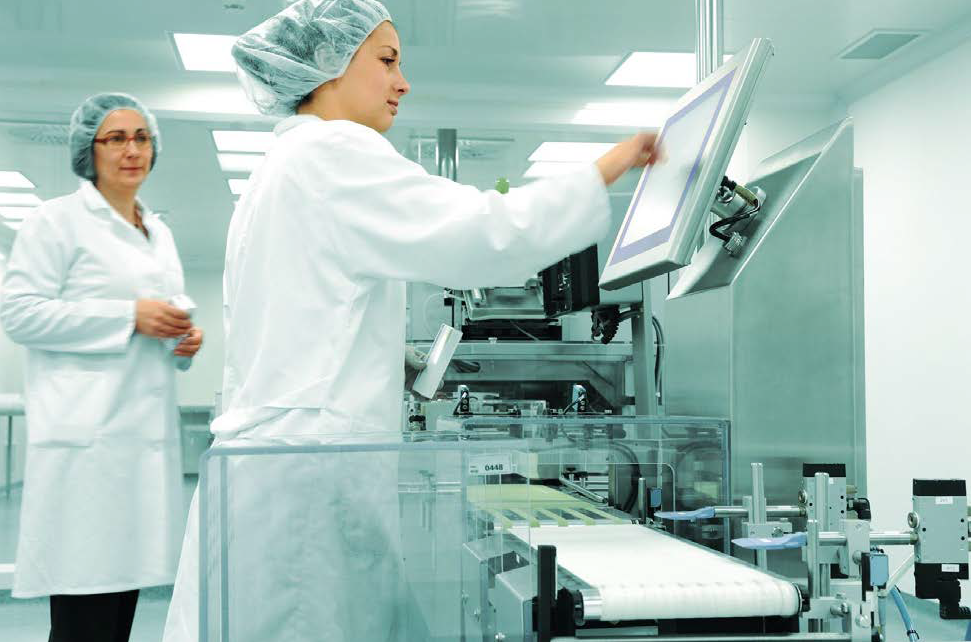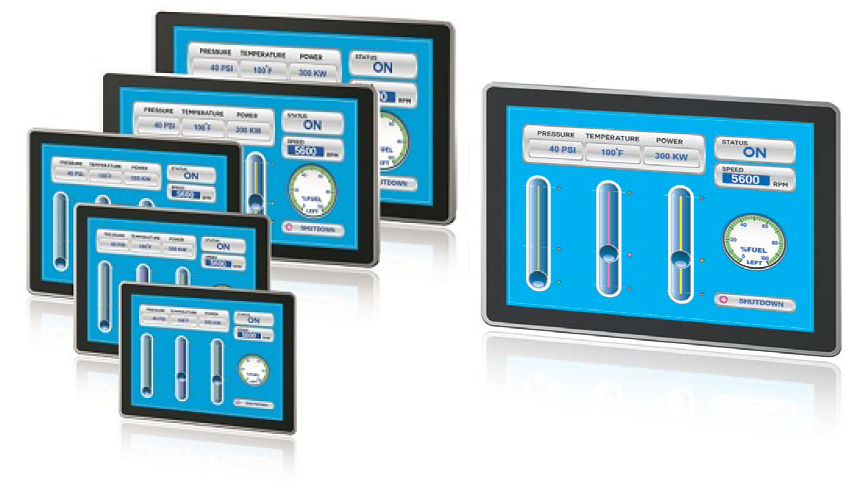Introduction
Touch technology is making a huge impact in our day-to-day lives; with a variety of multi-touch enabled devices, we have access to information in the most convenient way. Simultaneously for industrial applications, multi-touch operating concepts are constantly improving the entire industrial settings. While there is a number of touch technologies available in the market, this technical white paper addresses multi-touch over single touch, and detailed information on how to select the right features for different work needs.
Summary
This technical white paper by ARISTA Corporation consolidates the crucial aspects of how the latest multi-touch technology impact businesses and enhances the environmental, ergonomic, and economic conditions of a workplace. This paper also focuses on touch solutions for myriad industries including healthcare, marine, government, oil & gas, and pharmaceuticals. Multi-touch has an edge over single-touch technology because it’s more convenient for users to design their applications. Lets us now dive into the detailed information below.
Definition of touch and how it works
Simply stated, touch means contact with something, and the touch screen is an input device on top of the visual display of any information processing system. Users give inputs through single or multi-touch gestures and interact with the machine. The best example is smartphones and tablets, which are an integral part of our lives and make us well aware of touch functionality. That said, for critical applications and industrial work areas, simple touch functionality is not enough. For all such scenarios, we need robust multi-touch features to deliver the desired results.
What is single and multi-touch?
Single-touch gestures with finger or stylus, allow touch sensors to detect by touch controller and the application is able to sense the touch event. This option is limited to a single touch at a time. With multi-touch functionality, users get a response for multiple touch inputs simultaneously.

The multi-touch revolution
We are already aware of how smart-phones and tablets have become an integral part of our lives. One of the major reasons for their popularity is the intuitive operational and user-friendly interface. Moreover, the speed with which these devices work, users are able to perform multiple functions using a multi-touch gesture is radical. Likewise, for industrial operators multi-touch panels are becoming common, for the ease of improved accuracy. Multi-Touch gesture allows users to flick, drag, or swipe, along with spreading fingers to zoom in and zoom out images or content.

How multi-touch works
As discussed above multi-touch interface is able to recognize intuitive gestures and then revert with smart responses. For instance, swiping a finger across a display will move page/image and will open another screen. Users can resize, rotate, and perform many other functions at the same time. Multi touch-screen uses a grid to locate where the touch is raised, since it senses multiple locations, the response is more accurate, quicker, and reliable. Pinch to zoom is a great example of multi-touch functionality which enables operators to get accurate results even in complex work requirements.
Multi-touch for industrial HMI
The HMI (human-machine interaction) is the space where interaction between humans and machines occurs. To make the user interface effective and approachable, HMI takes it to another level of making advanced operational decisions.
There are several gestures used in the application, some of which include zoom in/out, multiple fingers rotation, scrolling up/down, swiping to switch between screens. Multitouch makes all these functions easy and more accurate. As per researches and industry expert’s multi-touch gestures are more effective in preventing any hazard or dangerous operation.
Multi-touch panels allow new dimensions for an enhanced HMI design and let users take full advantage of its capabilities. In many simple words, HMI is an interface for control and operations. Specifically to manufacturing and industrial process control systems, HMI increases productivity by providing a centralized control system. HMI is beneficial for a wide range of industries including pharmaceuticals, food and beverage, plant manufacturing, industrial automation, and many more. One of the main advantages of a HMI is a user-friendly graphical interface, which allows a seamless and hassle-free functioning.
Key benefits of Multi-touch for HMI
Improved accessibility and control-Touch screen operations for industrial applications are developed for a simple and user-friendly atmosphere; hence there is more reliability, security, control, and ease of operation. The major benefit is the operator/user having the flexibility to use complex control panels with the least hassle. Moreover, the screen gives good visibility even when placed in unusual directions or in extreme temperatures.
Harsh and hazardous environment: Industrial multi touch-screen panel PCs or displays can be tailored according to the regulations/requirements of different industry types. For example, for pharmaceuticals, research, and biotechnology productions, all materials are tested to withstand chemicals and cleaning agents. Moreover, wide-format touch screens are available with an option of antimicrobial and chemical resistance. In the case of industrial automation, screens are classified as per their zone, class, and division.
Advanced visualization: With an option of the bright display, users are ensured with optimum legibility. The industrial PCs are available with different sizes and reproduce diagrams and graphics to be understood by users clearly.
Safer and convenient to use: As already mentioned above, operating a multi-touch screen with HMI does not involve long hours of training. With a convenient user interface and flexible functionality, similar to how we use a smart-phone, operators can easily adapt to the work environment. Moreover, the operation is allowed only with finger movements or multi-hand gestures, hence ensuring a safe and hazard-free working environment.
With capacitive touch benefits in abundance and accurate results response, resistive touch screens are being phased out in the commercial market. To know more about how resistive touch limitations and features, please refer below.
Resistive touch
Resistive is another popular type of touch screen used in automation, medical, industrial, and other similar work areas. The resistive touch-screen is able to identify touches through a gloved finger, fingernail, or any object that is able to create enough pressure to the point of touch. That said resistive technology mostly provides a cloudy display and the single touch sensation often wears out with time. Resistive touch requires hard touch inputs and takes time for a response. For resistive touch to work, pressure on the screen has to be strong enough so that touches can be registered.
Most of the resistive touch-screens do not allow gestures like zoom in/out or multiple fingers touching different locations on the screen. Although resistive touch technology has improved a lot in recent times, still they are less popular among high-end devices used for critical needs.
Projected Capacitive touch or Pro-cap
Projected capacitive touch (PCT) is the latest and ongoing trend in the market and has become a top choice for several industrial product developments. The primary reasons for the success of PCT are quick response time, intuitive touch options, and users can operate with both hands simultaneously. Moreover, projected capacitive touch technology can be availed with products that are meant to be used in harsh working conditions. PCT (Projected capacitive technology) detects touch by determining capacitance at each electrode. When touch or other contact approaches an electrode it converts into locations that the system uses to detect touch. There are two types of sensing methods, self, and mutual capacitance.
Self-Capacitance: In this one layer of individual electrodes are connected with capacitance sensed circuit, further sending touch data as an electrical impulse.
Mutual Capacitance: The capacitive circuit works with two different material layers, one carrying current and other sensing lines to detect current at the nodes.
Implementing and operating
The latest technologies with great functionality require investment; however multi-touch HMI is affordable and does not require much in implementation, up-gradation, and maintenance. The multi-touch technology clearly brings out advantages and accuracy in work practices. Moreover for industrial conditions, multi-touch screens are the best option to be used even in harsh and hazardous locations. With multi-touch HMI screens there is protection against dirt, extreme temperatures, and other obstruction. All these features are available with lower costs and less maintenance.
With majority of staff, engineers and other designated workers using smartphones and tablets, operating multi-touch panels naturally minimizes efforts of getting people trained. Since multi-touch gestures for HMI systems are highly user friendly, the operation is quick and easy to learn. The systems are incorporated with an interactive interface and all the latest technical specifications, thus outstanding from legacy devices.
Moreover, multi-touch displays support the latest and legacy operating systems, Windows Embedded 8.1 Industry Professional, Windows 7 Professional/Ultimate, and Windows Embedded Standard 7 Premium. Hence giving control over computing and communication to the users, integration of hardware and software makes it a next-generation HMI.

Safety and maintenance
Not only multi-touch HMI is convenient and beneficial technology, it also embeds significant safety features to help protect operators and the workplace. For instance, functions for starting or stopping a machine are designed with an additional checkmark, ensuring a confirmed action is executed. Since users are able to use both hands there are fewer chances of accidental touches resulting in unexpected danger.
Overview of ARISTA Multi-Touch TPC
Today’s industrial application touch technology has drastically revolutionized the operating concepts for industrial applications. The multi-touch technology has the potential to make machine operation more intuitive, faster, and safer. The industrial multi-touch series from ARISTA is great for a real-time accurate display of information. The multi-touch TPC series provide ease of operation for complicated/harsh working environment needs. One of the panel PCs range is the ARP-3800AP-E01, this multi-touch panel PCs range embeds new dimensions for innovative HMI design and eliminates tedious tasks of navigating the menu after the menu of push buttons.

Vivid Display with Multi-Touch functionality
The ARP-3800AP-E01 offers wide selection of bright LCD display sizes and resolution, ranging from 15" / 1024 x 768, 17", 19" / 1280 x 1024, to 21", 24" Wide Screen 16:9 aspect ratio FHD 1920 x 1080 resolutions. The Projected Capacitive Touch Screen on ARP3800AP-E01 is a solid glass surface that makes it easy to clean and offers optimal visibility. With ARP-3800AP-E01 users can simply swipe their finger across the screen just like we use smartphones and tablets. The units are powered with Intel Bay Trail 1.9Ghz Quad-Core E3485 Atom CPU that can be populated up to 8GB DDR3 system memory to run Windows 7 Pro and the latest Windows 10 versions. ARP-3800AP-E01 Series comes with a powerful system configuration and rich I/O connectivity listed below:
- Built-in UPS Capability: The feature of battery charging technology is integrated into all units of the ARP-3800AP-E01 series; hence there is no hassle in the case of a power outage. Since the external battery can act as a UPS and trigger the unit to shut down the Windows operating system at the time of unexpected power outage. The smart battery can be used as backup power to ensure an uninterrupted operation without power.
- Rich I/O Connectivity: ARP-3800AP-E01 provides four serial ports that can be set to RS-232/422/485 in the BIOS without opening the enclosure to change the jumpers setting. There are 4-bit digital input and 4-bit digital output provided as well.
ABOUT US
ARISTA is a pioneer in the industry of product development, engineering, manufacturing, and customer support. Originally formed in 1992, ARISTA has offices in China, India, and Taiwan. With years of experience and expertise in Industrial Panel PCs, Industrial monitors, Box-PCs, and Fanless embedded computers, Rack-Mount Computers, ACP ThinManager Ready Thin Clients, Embedded CPU Boards and Video Extender/Switched. ARISTA has served customers with reliability, integrity and trust.
Disclaimer
Information in this document is the property of ARISTA Corporation; no part of this document may be used without prior permission from ARISTA. This paper only provides an overview of multi-touch technology and its further classifications. It should not be considered as a recommendation/ substitute for any kind of safety guidelines.


